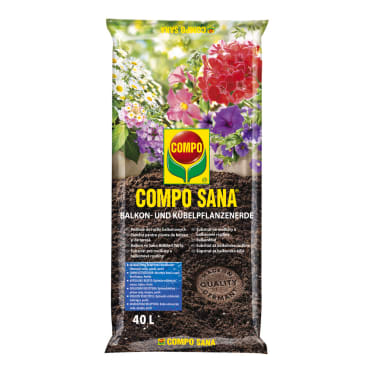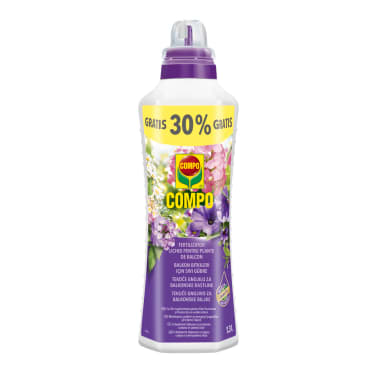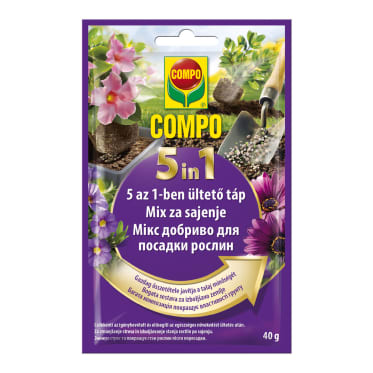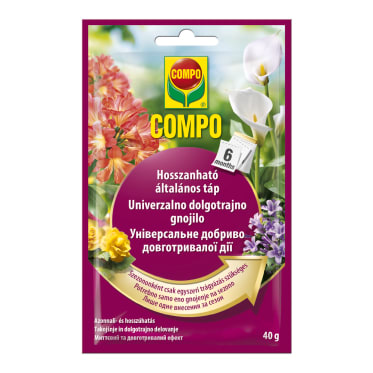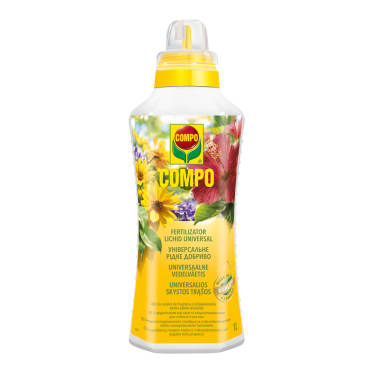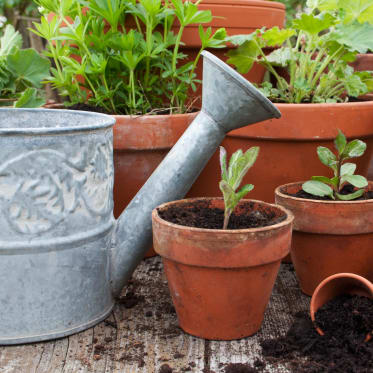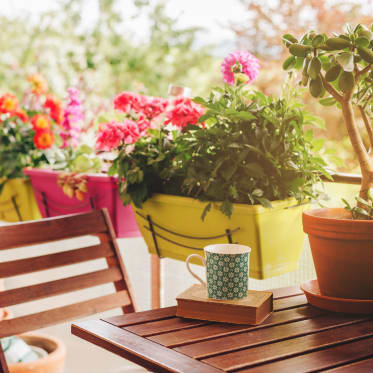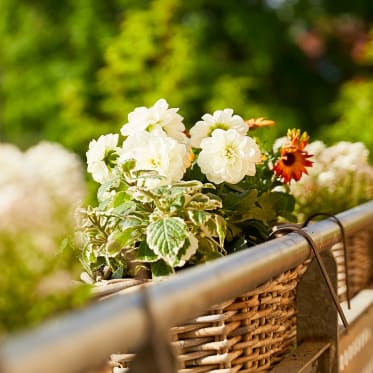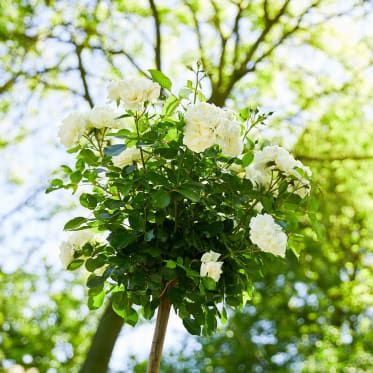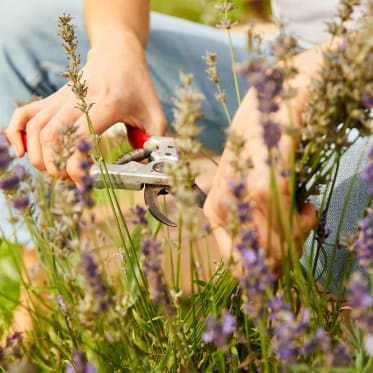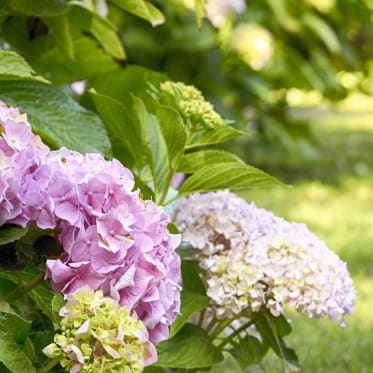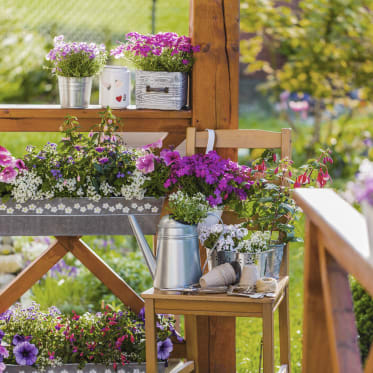Frequent search terms

- COMPO
- Guide
- Plant Care
- Balcony and potted plants
- 11 spring flowers for gardens and balconies
11 spring flowers for gardens and balconies
When the heralds of spring start peeking through the snow at the start of the year, it's time to look forward to the weather getting warmer. After all, what could be nicer than a colourful spread of spring flowers with tulips, narcissi and primroses? We present our 11 favourite flowers to bring a burst of colour to your day-to-day life!

The first sign of spring
1. Primroses
The name primus, from which the botanical name Primula is derived, doesn't mean 'the first' for nothing. Primroses are among the first to open their flower buds. These spring blooms will add a pretty touch to your windowsill, balcony box and flowerbed in the garden. You can choose from a huge range, from popular common primroses through to drumstick primroses with their striking, globe-shaped flowers. They come in a seemingly limitless array of colours – so you can turn your balcony into a true riot of colour. Otherwise, primroses are perfect for combining with other early-flowering plants like narcissi or tulips. Even though primroses are normally sold as little container plants, they're anything but a disposable product. Did you know primroses are actually a perennial garden shrub? Plant them in a bed in a semi-shaded spot in March or April and they'll grow to a ripe old age!

Year in, year out
2. Ranunculus
With their lavish flowers akin to peonies, ranunculus are a magical eyecatcher for your spring planting arrangement. Ranunculus open their flowers from April onwards – and with everything from orange to violet and pink, you're spoilt for choice. This ornamental plant grows to 20 to 40 centimetres high, making it perfect for garden beds – but it also adds a decorative touch to balconies and patios. Ranunculus shouldn't be planted in your balcony box until early March at the earliest. As their tubers only grow a couple of centimetres under the soil, they're not very resistant to frost. Once they've taken root, these spring flowers then have so much stamina that they'll be able to compete with your summer plants in June. Read our plant guide on ranunculus to discover what else you need to bear in mind when it comes to caring for ranunculus.
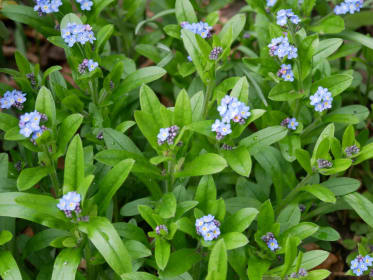
Simply unforgettable
3. Forget-me-nots
Forget-me-nots are a classic spring flower. There are various stories about the origin of its unique name, with one medieval tale alleging that the flower asked God not to forget it. Forget-me-nots actually do a very good job of not letting you forget about them on their own! With its magical blue blossoms, this spring flower looks fantastic in almost every location, adding a splash of colour to balcony containers or garden beds. Forget-me-nots are shown off to full effect when paired with other spring flowers, such as horned violets or tulips. Find out more about how to correctly plant and care for forget-me-nots in our plant guide.

Delicate yet robust
4. Horned violet
Looking for a low-maintenance flower that you can easily plant under container plants or shrubs? If so, horned violets are the perfect choice. With its bushy, flat structure, this ornamental plant creates thick carpets of flowers and is perfect for underplanting. Of course, you can also plant the pretty horned violet in your balcony box, raised bed or garden bed. You can look forward to its main flowering season from March onwards. Its flowers offer an eye-catching range of interesting colourways and patterns in violet, white or even yellow. Read our plant guide on horned violets to discover how to properly plant and care for your horned violets.

Classic and elegant
5. Tulips
Tulips are a classic must-have flower for the start of spring. This bulb from the lily family can grow from 10 to 70 centimetres tall, depending on its variety. With its captivating flowers, ranging from delicate shades of pink to radiant yellow, it's one of the most popular spring blooms. When paired with other bulbs, such as narcissi or crocuses, in particular, you can conjure up colourful, creative spring arrangements in your balcony box. Find more tips on planting and caring for perennial spring-flowering plants in our plant guide on tulips.

Rings in spring
6. Narcissi
Just like tulips, narcissi are among the bulbs that grow every spring and impress hobby gardeners with their radiant yellow, white and orange blossoms. Their unmistakeable flowers, akin to small bells, make narcissi the veritable herald of spring and mark the start of the warmer months from February onwards. Narcissi are often called daffodils – but they're actually just one of twelve varieties of narcissus. Find more fascinating information and tips for proper care in our plant guide on narcissi.
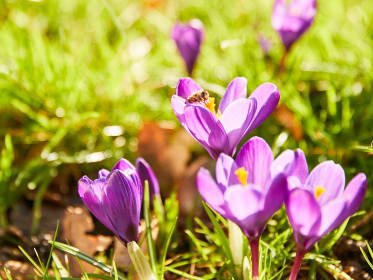
A highlight for bees and bumblebees
7. Crocuses
You can divide crocuses into three groups based on their flowering season. Early-blooming botanical crocuses flower first. They include small crocuses and woodland crocuses. These flowers will share their lovely blooms with you from as early as February or March. From March onwards, they're joined by garden crocuses. Early-flowering crocuses are the ideal addition to your spring bed in the garden, but they can also decorate any balcony box or container. That said, their flowers aren't just pretty, they're also a key source of food for bees and bumblebees in the spring. There are more than 90 different types of crocus, so you can choose from a huge colour palette, ranging from yellow to violet. Unlike people often assume, crocuses aren't bulbs. They actually have a corm that grows underground – so you can look forward to new shoots from these pretty ornamental plants every spring. Read our crocus plant guide to discover how to plant and care for these spring flowers properly.

Beautiful and resilient
8. Daisies
Whether daisy, goose flower, marguerite or bonewort, this pretty spring flower goes by many names. Its Latin name Bellis perennis means something like resilient and beautiful. And with its pretty round flowers in pink, red or white, the daisy really lives up to its name. From March to June, these ornamental plants add a decorative touch to balconies and gardens, growing up to 20 centimetres tall. Daisy hybrids are part of the daisy family and are a cultivated variety of the well-known common daisy.

Delicate and white
9. Snowdrops
When the little white flowers of snowdrops start sprouting out of the ground as early as January or February, we all know that spring is on its way! These pretty heralds of spring don't just decorate lawns, they are also ideal for planting under shrubs and ornamental trees in combination with other early-flowering plants, such as crocuses or horned violets. The downward-hanging bell-shaped flowers of the snowdrop are not just a pleasant sight for us after the cold winter months, they're also one of the first sources of pollen for bees. Alongside our indigenous common snowdrops, there are many other kinds and more than 500 varieties of the magical harbinger of spring. Our plant guide on snowdrops contains more fascinating information about the various varieties of snowdrops and tips for planting and caring for them.

The scent of spring
10. Hyacinths
Hyacinths offer us a magical year-round treat, courtesy of their stunning blooms and gorgeous scent. With their exceptional thick flower stems that can grow up to 30 centimetres tall, they turn every flowerbed into a colourful oasis – from violet and pink through to white. Hyacinths were much-loved even in antiquity, and were apparently named after Hyacinthus, a figure in Greek mythology. Read our plant guide on hyacinths to find out more about how to combine hyacinths with other early-flowering plants and how to care for them properly.

The crown's new adornment
11. Crown imperial
With its imposing yellow or orange-red flowers, crown imperial certainly lives up to its name! This bulb unveils its bell-shaped blossoms in April and May and adds a real highlight to a spring bed, courtesy of its natural height of 60 to 100 centimetres. Add a couple of luminous yellow narcissi, and your spring bed is done and dusted! But alongside its majestic appearance, crown imperial has another benefit: its intense smell is said to deter voles. Read our plant guide on the crown imperial to discover what you need to bear in mind when planting and caring for this flower.
Products for your spring flowers
This might also interest you

